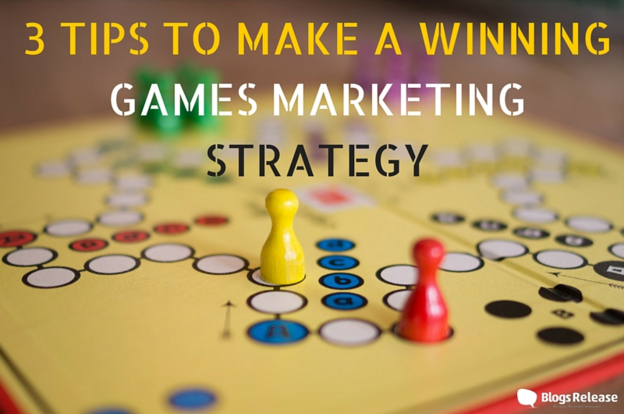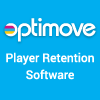The upcoming Casual Connect Europe conference in Amsterdam (16-18 Feb) will showcase the top speakers from the games industry, offering insight into the latest innovations, strategies and the best of new indie games. However, creating a great game is just the beginning, and a stellar marketing strategy is key to a successful venture. The BlogsRelease team has a few great tips to help you get started - their CEO Eti Nachum tells more!
main
BusinessContributionsExclusive InterviewsIndustryOnlinePR & Marketing
Millennial Media’s Lewis Rothkopf on Better Games through Big Data
Lewis Rothkopf, the senior vice president of global monetization solutions at Millennial Media, moderated a panel discussion on Leveraging Data to Build Better Games and Enhance Monetization at Casual Connect USA 2014. While there, he spoke about that panel, Millennial’s ongoing projects, and the current and possible future trends at the intersection of big data and gaming with Clark Buckner from TechnologyAdvice.com (they provide coverage content on enterprise employee engagement, customer loyalty and rewards, and gamification trends and much more).
Millennial Media is an independent audience platform in the digital advertising space that connects brands and consumers by leveraging data through a mobile-first approach and cross-screen targeting solutions. Rothkopf oversees the company’s publisher and developer relationships. Consequently, he has a unique understanding of the opportunities and difficulties facing today’s gaming industry.
Better Games through Data-driven Decisions
Part of his panel discussion at Casual Connect concerned itself with one of the gaming industry’s major challenges: developers and marketers need to tap into ways of leveraging data so they can make smarter, more efficient, data-driven decisions in order to reach the right consumers in the right place at the right time on the right device with the right mindset and within the right context.
Additionally, Rothkopf pointed out three other critical areas that need to be addressed:
- Actionable Intelligence: Developers need to gather deeper and less obvious insights based upon in-app behaviors. Such insights are observed alongside third-party data based on offline behaviors so that developers can make faster, smarter decisions in regards to monetization and user acquisition.
- Hyperlocal Targeting: Developers are tying everything back to local, both to monetize and acquire users. Such hyperlocal targeting that reaches consumers in the right place, mindset, and time can be a challenge.
- Individual SKU-ing: Developers are realizing that creating hits is very much a numbers game. Consequently, they’re releasing a much greater volume of individual SKUs and iterating on them once they’ve taken a foothold instead of hoping to release one monolithic, tent-pole title. Many casual titles are also being released in the hopes that one or more of them will hit it big (see Flappy Bird).
Acquiring Users and Monetizing
Rothkopf found that the Casual Connect audience wanted to know more about data conversion in terms of giving developers an edge in user acquisition and monetization—two areas that Rothkopf and his team at Millennial Media understand. He cited two specific areas that Millennial Media currently focuses on in order to help devs acquire users and work toward monetization: location and cross-device and cross-screen.
When focusing on location, Millennial Media marries location and context. In partnership with Esri, they’re re-launching Point: Audience Location Advertising, where their clients can target traditional location dimensions (country, date, etc.), time dimensions, and hyperlocal dimensions like household income, environment, propensity for shopping, etc. To deal with cross-device and cross-screen, Millennial Media also offers PATH, a mobile-first, cross-screen advertising suite that helps advertisers reach consumers anonymously. PATH provides access to tens of millions of cross-screen profiles in a seamless manner.
Successful Gaming Marketing
Finally, Rothkopf stressed that success comes from having a fair exchange of value, achieving relevant advertising, seeking the right targeting, and leveraging both first- and third-party data to make smarter decisions to drive monetization and deliver a better gaming experience.
To hear more from Lewis Rothkopf on big data, gaming, and his insights from Casual Connect USA 2014, listen to the podcast interview below. For more information on Millennial Media, visit www.millenialmedia.com, or if you’re a developer seeking to acquire users or working toward monetization, visit www.mmedia.com.
Asia 2014Video Coverage
Marcus Kim: Responding to the Needs of Game Developers | Casual Connect Video
“In order to maximize LTV, you need to understand user behavior first,” advises Marcus Kim during his session at Casual Connect Asia 2014.
Marcus Kim, the product director of Valuepotion, is constantly looking for new services and technologies to improve the platform, a quest which continues to expand his insights into the digital industry. During his time at Daum Communications, he worked on several projects, including their new services, Ad@m, the first mobile ad network, and Daum Display Network, the first ad network in Korea. He admits, “Developing new platforms is not easy, however I have great opportunities to utilize my passion for this type of project, including Valuepotion, at Daum.”
Listening To Developers
When Kim and his team started to develop this platform, their original focus was solely on game marketing. However, he realized that many developers are under pressure to integrate many SDKs into one game. So he expanded the concept of the platform from marketing to include analytics, allowing them to understand their app and marketing metrics and also utilize their marketing strategies based on the analytics. In this way, developers will be able to maximize revenue from their games.
After expanding the platform from marketing to analytics, the team developed a simple but fast integration process for game developers while still offering various marketing tools. They will continue to focus on game developers’ needs so they can utilize the platform to realize success with their games.
Built For Success
Creating the Valuepotion team at Daum Communications has brought Kim the greatest satisfaction in his career. The team includes experienced engineers and a platform strategic planner; while it is a small team, their ease of communication allows them to move quickly to launch their new product. Their goal is to launch the platform around the world by the end of this year.
As product director of Valuepotion, Kim is responsible to manage all matters relating to the platform. While developing the platforms Ad@m and DDM, he acquired a broad knowledge of global trends which show the mobile game market is one of the fastest growing markets in the industry. He recognized the need to increase Korean mobile game market growth.
Priority #1 - Monetization
The rapidly changing mobile market environment makes it difficult for Kim to predict what may happen in the industry in the next three to five years. However, he recognizes monetization as the top priority for measuring the success of a mobile game. For the next year or two, he expects to see developers working to increase their revenues in two ways: with in-app purchases and with advertising. The free-to-play business model, with its in-app purchases, continues to increase, but game developers may have trouble making money with free-to-play. Kim expects explosive growth of in-game ads matched to game content, and the interstitial ads will have sustained growth, “because game developers have to attract in-app purchases in an increasingly competition environment and that is not easy to do,” he says. “So it will be an important additional revenue model like advertising.”
For the future, he plans to provide one of the leading platforms with the essential factors that will allow mobile game developers to achieve success by adopting new products based on market demand.
A Switch to Mobile
Kim’s work leaves him little free time, but he does enjoy playing with his two sons on the weekends. He also enjoys gaming; his favorite platform was PS2 and he loved playing Winning Eleven. But now he prefers mobile gaming since they offer a variety of genres, including arcade puzzle, which is one of his favorites. As well, mobile games are always accessible; whenever he has a moment he can play.
At Casual Connect Asia, Kim announced the launch of the closed beta program of their platform to the Asia market. Since February, they have been working with their Korean partners, who have been satisfied using the platform for analytics and marketing of their games. They will also roll out their new product, InPlay video ads, which feature a video of up to 15 seconds; after watching the video ad, players receive a reward toward an in-app purchase.
ContributionsDevelopmentGame DevelopmentIndieOnlinePostmortem
Glint Vs. The App Store : Getting Your Game Out There
After spending seven years at Lucasfilm’s Industrial Light & Magic, Ensomniac Studios‘ Ryan Martin decided it was time to create something on his own, something he wanted to create. He tells us the tale of creating Glint, detailing the design, development and marketing of his first attempt at self-publishing a free-to-play mobile game.
After working at Lucasfilm’s Industrial Light & Magic for so long, I found myself craving more control over what I was making. I decided it was time to set out and start my own studio where I could develop mobile content. Being a developer and designer, the current mobile landscape is an appealing canvas for content distribution. After eight months of part-time design and development, I launched my first game, Glint.
Step Aside, Quest
Glint was not actually my first mobile game, but it’s the first game I’ve published. Prior to 2013, I honestly didn’t play games on my phone. I didn’t understand the point - screens were small and processors were limited. The quality of games I saw was poor; most of them were 2D with cheap-looking graphics and generally uninteresting to me. At some point, I started noticing that it seemed like everyone was playing Temple Run. I decided to see what all the fuss was about and I downloaded it. It was free, after all.
I remember one night sitting on my couch at home, obsessed with this game. I made my first ever in-app-purchase and, for the first time, understood how it was possible to make money with games. It got me thinking about how easy a game like Temple Run is and how I could use my existing skill-set to create something similar - as an experiment. So Quest was born, as was my passion for mobile game development.
Working at an industry-leading visual effects house like ILM forces you to push the limits of what you and your tools are capable of. I took this to heart when developing Quest - I wanted it to be beautiful and cinematic. I developed a pipeline and processing technique to pre-render and bake all of my graphics to keep the quality up and the mobile processing power down. I almost finished the game.
“Your First Game Will Fail”
As I came closer to finishing Quest, I started doing a lot of research about best practices for launching mobile games. What I learned was disheartening: my game would fail. Apparently, it’s pretty difficult to successfully launch a mobile game these days. With thousands of new titles hitting the App Store daily, the new kid on the block has almost no chance at success. So I decided to start working on another idea I had - a simpler gameplay mechanic that I perceived would be less time-intensive to make than a visually detailed game like Quest.
Glint was the game that would consume my post-Quest game development time. Initially, my goal was not to create the game that exists today, but instead, rapidly create a simple version to test the waters of the App Store. Of course, I should have known that my obsessive nature wouldn’t allow me to release a game that I didn’t feel was polished. So, Glint became my new Quest.
A Great First Playtest
In the early days of development, I had people test the game mechanics frequently. It’s an exciting feeling watching someone play your game and become addicted to something that is so rough it’s barely playable. I installed a version of an early prototype on my roommate’s girlfriend’s iPhone since she really enjoyed the gameplay. A few weeks later, my roommate said “all she does now is play Glint, and when I try to talk to her while she’s playing, she clearly isn’t listening to anything I say.” That was an amazing compliment.
I continued to iterate on the gameplay and design for months. Each level in Glint is created based on a set of parameters and colors. I knew that I wanted to create a level editor that would allow me to quickly build and tweak each level. Something I picked up at ILM was the incredible advantage that quick iterative changes introduces. Building tools to support that concept assisted me, as a solo developer, in creating many aspects of the process. Still, though, it was important to build out each level and understand how the game felt.
Drunk Coding
If you’re reading this and you’ve been in a situation like me, you know that game development can be maddening. Many nights, I would drink while coding, trying to hit that elusive Balmer Peak. As I would test the game, I took frequent notes of things to tweak. One night, in particular, I was slightly intoxicated and super thrilled with one particular level, as recorded in my notes.
Market Early and Often
Once I had a game that I was proud of, I started doing tons of research on how to market games on a… zero dollar budget. It turns out this isn’t a super easy thing to do. I came across Indie Game Girl (Emmy Jonassen), who had done a really inspiring talk at Konsoll titled How to Successfully Market Your Indie Game on a $0 Budget. This fundamentally changed the way I thought about marketing.
I immediately switched gears from developer into marketer, something I knew nothing about. I started putting a lot of effort into creating “irresistible marketing material”, which is something that Emmy and other marketing professionals speak about often.
I put together an elaborate press kit containing lots of content about the game.
I began reaching out to the press and asking, begging, if they would preview Glint and write about it. My initial efforts paid off with AppAdvice requesting to cover the launch exclusively. They published a great write-up two days before the launch and published a phenomenal review of the game on launch day.
After the release, the game was covered by PocketGamer, TouchArcade & Apple’N’Apps - which was amazing. I decided to launch the game right before GDC so that we could promote it at the week-long conference. One of the nice things about getting press coverage is that you can use quotes to create better marketing materials.
In the End
Glint launched on March 6th and is available on both iTunes and Google Play. In the first month of sales, Glint racked up about 10,000 downloads. Not nearly enough to hit critical mass, but a much better “first launch” than I expected. I hope that other developers and designers understand the importance of both marketing and polished design in an ever-more-crowded App Store.
Ryan would love to hear your thoughts and connect with you. You can shoot him an e-mail at ryan@ensomniac.com or connect with him on Facebook.
Europe 2014Video Coverage
Inna Zaichenko: A Passion for Games | Casual Connect Video
When discussing the Asian market during Casual Connect Europe, Inna Zaichenko says, “It’s worth it, and actually, everything depends on your efforts and really how strong you feel about them, and how strong you want to be there.”
Inna Zaichenko, founder and CEO of Zenna Apps, has one overarching passion in life: games, games, games! Even when she is not working, she is constantly involved, playing games to analyze their mechanics, gameplay, and monetization and to measure their initial success. If she has a few free days, she finds traveling a source of inspiration.
Tough Platform Policies improve User Experience
Currently, Inna’s favorite platform is Kakao Game. She tells us they have tough policies and requirements for the games they publish. As a result, she says, “All their titles are really good games you definitely must play.” She particularly enjoys the fact that Kakao has such a deep approach in their user care policy. They have implemented instruments for socializing directly with developers, as well as with the users who are playing the game along with you. She emphasizes, “That makes me feel strong, that as a user, I will definitely be heard.”
Currently, the game she plays is PacoPang by Treenod, saying,”I love it!”
The First Big Contract
Inna claims the most satisfaction in her career has come from starting her own company. Although the work has been very intense and constant, she insists, “Nothing compares with the feeling you get from that first big contract, completing a project or making an investment proposal.” However, she emphasizes that running your business is not a comfortable thing; suddenly you are responsible for more than your own personal achievements. You also have a responsibility as a part of the success of clients, partners, and colleagues. Fortunately, working in the games industry is still something she calls fantastic.
Over the past six years, Inna’s career has been involved with internet marketing and startup development, where it was necessary for her to acquire expertise in product development, marketing and bringing out a live product. As CEO of Zenna Apps, she is also involved with managerial staff, business development, and sales and finds all of these factors important to the success of a startup.
Marketing is Now Critical
As Inna considers the challenges facing the games industry, she particularly emphasizes the importance of marketing. She believes messengers will take their place among game platforms, providing the means for viral marketing. She also sees the focus of game marketing changing from user performance to user acquisition activities. At Zenna Apps, they are concentrating on moving to the next level with marketing and promotion.
The greatest challenge in the games industry is to be constantly learning, but she points out that it is critical because of the speed of changes in the industry. As she says, “What worked a year ago just doesn’t move the needle anymore.”
She expects the Asian market to lead the industry with new trends and goals. Puzzle & Dragons, incorporating games as a service, is a prime example of their new trends and the direction she believes the industry should go.





















